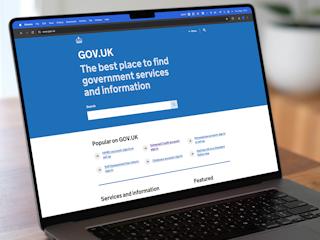One of the major changes is the shift from focusing on the "Most Economically Advantageous Tender" (MEAT) to just the "Most Advantageous Tender" (MAT). Dropping the word "Economically" highlights a big shift: quality and social value haven’t been entirely overlooked to date, but are now even more important. In the past, focusing too much on price sometimes hurt the quality and overall value of the services we bought. With this new approach, we can better recognise and support initiatives that drive positive change. We're moving beyond looking at cost alone to consider how our choices benefit society and the environment.
The Current Landscape and Its Limitations
Let’s look at where things are today. Currently, under Procurement Policy Note (PPN) 06/21, companies with government contracts over £5 million a year must share their plans to reduce carbon emissions and reach Net Zero by 2050. This is a good first step, but there are some issues. There's no governance or auditing to check if these plans are accurate and effective. The people reviewing them often lack the right expertise – understandably as procurement officers aren’t emissions measurement experts. Since this rule only applies to big contracts, smaller contracts are left out due to the potential overhead on smaller suppliers. This, despite the fact that the combined emissions impact of these smaller projects can be huge; since many of the digital solutions deployed are accessed by hundreds of thousands of people. Maybe it would be better to give everyone some sort of target, along with the support to be able to meet it?
Additionally, the integration of Social Value criteria in procurements has been a step forward, allowing for specific, measurable actions to combat climate change. For example, in our recent contract to support a high transaction government digital service, we have committed to running a low-carbon project, employing various techniques to minimise our environmental impact. Such commitments are vital, not only for the success of individual projects but also to help suppliers like us embed sustainable practices within our organizations and inspire others.
However, while Social Value inclusion is beneficial, it’s often seen as an add-on rather than an essential component. Sustainability shouldn’t just be an optional extra; it should be integral, much like how accessibility is now a non-negotiable in government digital services.
Building a Sustainable Future: What Should We Do Next?
So, what should government be asking us as suppliers to do from a sustainability perspective to respond to this procurement reboot – and what should suppliers be given credit for? Here are five key areas where we can drive meaningful change:
1. We should be able to show that our ways of working are underpinned by sustainable frameworks
We need to demonstrate adherence to sustainable frameworks, such as the Web Sustainability Guidelines and DEFRA’s Principles for the Design and Delivery of Greener Services. These resources provide actionable checklists and are essential foundations for developing new government services.
2. We should be able to show that our people have a strong baseline knowledge of how to consider sustainability in service delivery
We should be able to show that all team members have a solid understanding of sustainability principles. At Valtech, we recommend the Linux Foundation’s Green Software for Practitioners course – it’s free and takes just a couple of hours to complete. We’ve found it has had a significant positive impact on our teams’ decision-making. For example, all members of one of our teams supporting a high transaction government digital service have taken the course and as a result were inspired to spin up a side project to consider the carbon footprint of files stored as evidence to support applications. A little more awareness has a lot of impact.
3. Our working practices should demonstrably consciously minimise environmental impact
We should always be looking for ways to reduce our footprint. For instance, in the high transaction government digital service mentioned above, we:
-
Choose low-carbon travel methods
-
Use a carbon charter to guide our decisions on activities such as video calls
-
Engage in quarterly sustainable team-building activities.
4. We should be able to show how we are evaluating our carbon use within projects
Measuring carbon use in projects is tricky but that doesn’t mean we shouldn’t be doing it.
At Valtech, we've taken significant steps to measure and reduce emissions. We reduced the National Trust’s website page count by half and optimised its features to lower emissions.
We’ve gone further by using digital sustainability tools to assess and improve environmental efficiency for clients like a major pharmaceutical company. We measured emissions from their website, infrastructure, and even the laptops used for maintenance. Based on these assessments, we created prioritised action plans and monitored progress monthly to keep reducing emissions.
While the tools that we have used are valuable, they have not been free of charge. However, there’s a no-cost alternative: the Software Carbon Intensity (SCI) standard from the Green Software Foundation. It helps us measure the carbon efficiency of our software. Using it can be complex, but we and other suppliers are making strides, and we aim to demonstrate this progress in our work.
5. We should be able to show that environmental considerations are a significant element in our decision making frameworks and those we create for our clients
Our carbon measurements should be demonstrably encouraging us to reduce and optimise continuously, partly through consciously thinking about the impacts of the decisions we make. We should also be able to explain how we carry this forward with our clients. For instance, in our work with a new government regulator, we integrated environmental impact into the evaluation of new initiatives, giving it equal weight alongside budget and timeframe considerations. .
Driving Change Through Procurement
Setting these targets will help us as suppliers to drive change within our organisations and beyond. Over time, environmental requirements will be validated through a revamped government service standard that ensures sustainability. In the meantime, the new procurement act is a powerful tool to encourage this change.
The shift from MEAT to MAT isn’t just a change in acronym – it’s a call to action. Together, we can lay the groundwork for sustainability to flourish across all sectors, benefiting our communities, our economy, and our planet.
To find out more about what Valtech is doing to support our Civil Service colleagues and how we might be able to help you, please
-
Have a look at our G-Cloud sustainability listing for Sustainable Cloud Technology Assessment.
-
We will be at GovX’s Transformation Summit on 5th and 6th November 2024, and more event and conference plans will be released soon.
-
Speak to a member of our team about any questions or ideas you have. We are always keen to talk and see how we can help and even one conversation can have a massive impact on your organisation’s environmental footprint.











